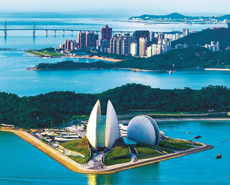
Chinese ferrosilicon prices to rebound after the coronavirus
----Interview with Mr. Wang Pengcheng
Ferrosilicon Export Manager for Asian region
Erdos Xijin Mining and Metallurgy Co., Ltd.
Ferrosilicon Export Manager for Asian region
Erdos Xijin Mining and Metallurgy Co., Ltd.
Mr. Wang Pengcheng who has been working in Erdos and mainly focuses on ferrosilicon export to Japan and South Korea and other Asian regions for over a decade. As the largest ferrosilicon producer in the world with an annual capacity of two million tons in total, Erdos Xijin Mining and Metallurgy Co., Ltd is supplying ferrosilicon to over 27 countries and regions in the world.
Asian Metal: Thank you Mr. Wang to join our interview. As the largest ferrosilicon producer in the world, what's the annual capacity of Erdos' each plant and their current operation condition?
Mr. Wang: Erdos owns 72 various kinds of sized furnaces in Inner Mongolia in total, and the annual capacity could reach 1.45 million tons, and there are two subsidiaries in Qinghai named Baitong and Huadian respectively. Baitong's annual capacity is 300,000t and 250,000t is for Huadian, and all three plants are running regularly now.


Asian Metal: As one of the main ferrosilicon suppliers for steel mills in China, please briefly review the demand of steel mills in 2019.
Mr. Wang: We're supplying ferrosilicon to about 130 steel mills in China. Discouraged by the weak demand in steel products export market amid the US-China trade friction in 2019, Chinese government drives the domestic demand aggressively. The crude steel output reached 0.996 billion tons in 2019, up by around 8.3% YOY. We predict the output of crude steel would keep firm in 2020, and the demand of ferrosilicon would increase.
















